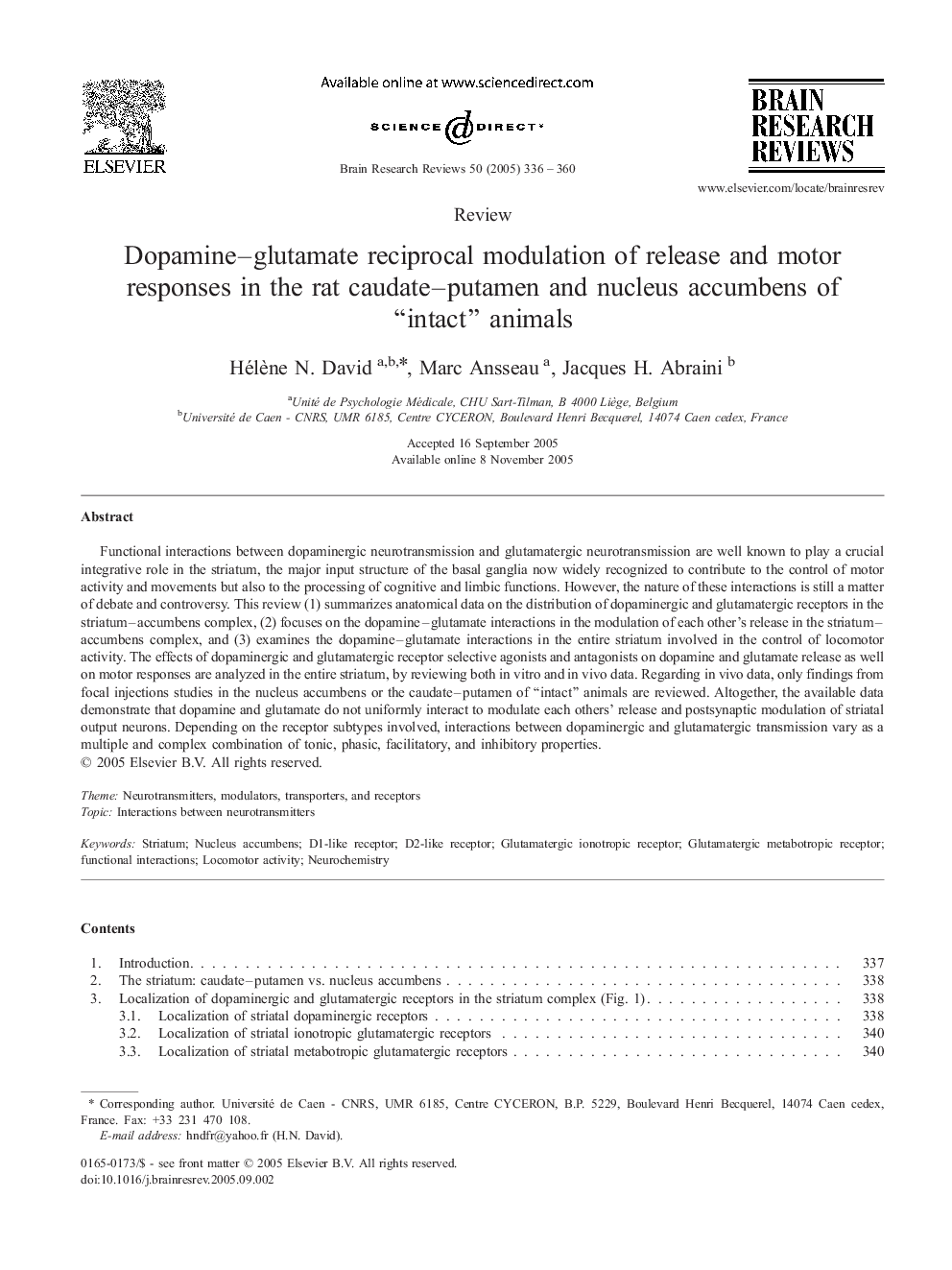| کد مقاله | کد نشریه | سال انتشار | مقاله انگلیسی | نسخه تمام متن |
|---|---|---|---|---|
| 9423227 | 1614475 | 2005 | 25 صفحه PDF | دانلود رایگان |
عنوان انگلیسی مقاله ISI
Dopamine-glutamate reciprocal modulation of release and motor responses in the rat caudate-putamen and nucleus accumbens of “intact” animals
دانلود مقاله + سفارش ترجمه
دانلود مقاله ISI انگلیسی
رایگان برای ایرانیان
کلمات کلیدی
D1-like receptorD2-like receptorStriatum - استریاتومNeurotransmitters, Modulators, Transporters, and Receptors - انتقال دهنده های عصبی، مدولاتورها، حمل کننده ها و گیرنده هاInteractions between neurotransmitters - تعاملات بین انتقال دهنده های عصبیLocomotor activity - فعالیت locomotorNeurochemistry - نورو شیمیNucleus accumbens - هسته accumbens
موضوعات مرتبط
علوم زیستی و بیوفناوری
علم عصب شناسی
علوم اعصاب (عمومی)
پیش نمایش صفحه اول مقاله

چکیده انگلیسی
Functional interactions between dopaminergic neurotransmission and glutamatergic neurotransmission are well known to play a crucial integrative role in the striatum, the major input structure of the basal ganglia now widely recognized to contribute to the control of motor activity and movements but also to the processing of cognitive and limbic functions. However, the nature of these interactions is still a matter of debate and controversy. This review (1) summarizes anatomical data on the distribution of dopaminergic and glutamatergic receptors in the striatum-accumbens complex, (2) focuses on the dopamine-glutamate interactions in the modulation of each other's release in the striatum-accumbens complex, and (3) examines the dopamine-glutamate interactions in the entire striatum involved in the control of locomotor activity. The effects of dopaminergic and glutamatergic receptor selective agonists and antagonists on dopamine and glutamate release as well on motor responses are analyzed in the entire striatum, by reviewing both in vitro and in vivo data. Regarding in vivo data, only findings from focal injections studies in the nucleus accumbens or the caudate-putamen of “intact” animals are reviewed. Altogether, the available data demonstrate that dopamine and glutamate do not uniformly interact to modulate each others' release and postsynaptic modulation of striatal output neurons. Depending on the receptor subtypes involved, interactions between dopaminergic and glutamatergic transmission vary as a multiple and complex combination of tonic, phasic, facilitatory, and inhibitory properties.
ناشر
Database: Elsevier - ScienceDirect (ساینس دایرکت)
Journal: Brain Research Reviews - Volume 50, Issue 2, 15 December 2005, Pages 336-360
Journal: Brain Research Reviews - Volume 50, Issue 2, 15 December 2005, Pages 336-360
نویسندگان
Hélène N. David, Marc Ansseau, Jacques H. Abraini,